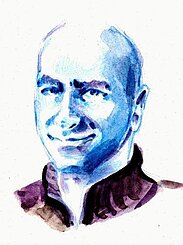CAD Laboratory
The CAD laboratory for the course of studies of Industrial Design offers stu-dents altogether 16 workstations, where the following CAD applications which are relevant to industrial design can be utilised:
- Rhinoceros 3D®
- Cinema 4D®
- SolidWorks®
Additionally, in room D93 there are also:
- workstations with wacom boards for creating computer-aided 2D il-lustrations and visualisations
- a DIN A4 scanner and a Nikon film scanner KB
- a 2D printer HP Designjet R90 (DIN A3) and Designjet (DIN A1)
Access to the CAD laboratory
After receiving a magnet card for opening the laboratory door (contact person: Mr. Thorsten Poppe), new students will participate in a workshop focus-ing on how to use the CAD laboratory. They will learn the basics of Windows-based networks and how to use the computers in the CAD laboratory. This introduction to the CAD laboratory takes place in the first semester and lasts anywhere between 30 and 45 minutes.
2D, graphics and image processing
An introductory course to the standard programmes related to graphics (Photoshop, Illustrator, Quark, Freehand & Co.) will be given by the Communication Designers in R12 T01 F05.
RP laboratory
The RP laboratory for the course of studies of Industrial Design offers students the opportunity of implementing by machine existing CAD design data into precise workpieces.
Additional lesson content:
- how modern rapid prototyping production processes such as fused deposition modelling and CNC moulding machines function
- how to produce proportional, ergonomical, design and functional mod-els, including prototypes with certain usage requirements.
Equipment:
- a 3D printer (FDM) Stratasys Dimension BST
- a CNC moulding machine MDX-20
- a CNC moulding machine MDX-40
Rapid prototyping with the Dimension (FDM)
Fused deposition modelling is a production process from the field of rapid prototyping (design), which can create workpieces layer by layer from a thermoplastic synthetic material (ABS).
This process is based on the liquefaction of a piece of wire-shaped plastic material, which occurs by melting it (in a manner similar to using a hot-melt gun). Afterwards, the material is cooled down and, in so doing, it immedi-ately solidifies again. The application of material occurs through a freely dis-placeable heating nozzle following a predetermined patter of x-y coordinates in the production process. When the model is being created layer by layer, the various layers bind themselves to each other, thus creating a complex part. The starting-point of the production process is the CAD data model of the object in STL format.

